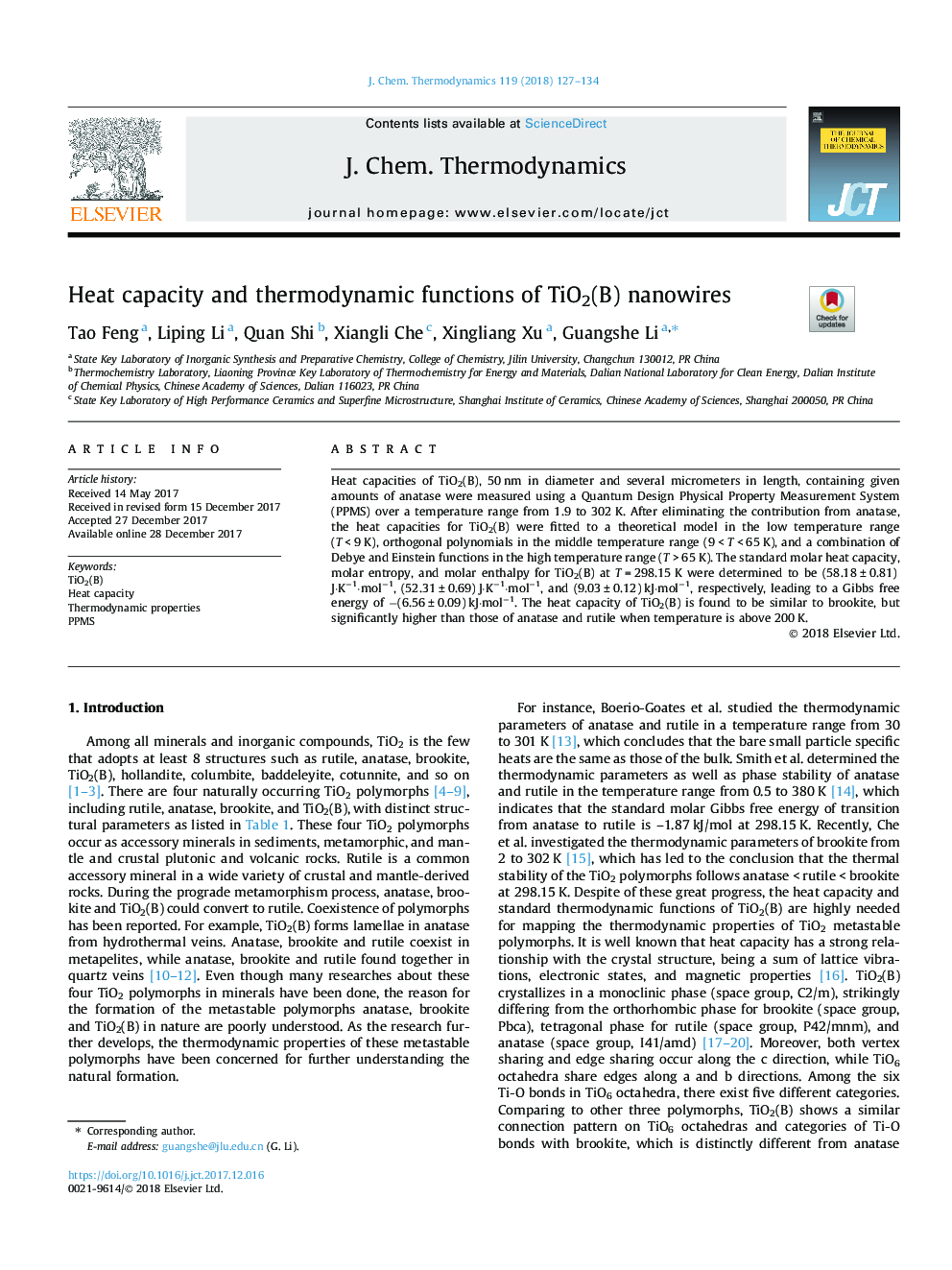| Article ID | Journal | Published Year | Pages | File Type |
|---|---|---|---|---|
| 6659827 | The Journal of Chemical Thermodynamics | 2018 | 8 Pages |
Abstract
Heat capacities of TiO2(B), 50â¯nm in diameter and several micrometers in length, containing given amounts of anatase were measured using a Quantum Design Physical Property Measurement System (PPMS) over a temperature range from 1.9 to 302â¯K. After eliminating the contribution from anatase, the heat capacities for TiO2(B) were fitted to a theoretical model in the low temperature range (Tâ¯<â¯9â¯K), orthogonal polynomials in the middle temperature range (9â¯<â¯Tâ¯<â¯65â¯K), and a combination of Debye and Einstein functions in the high temperature range (Tâ¯>â¯65â¯K). The standard molar heat capacity, molar entropy, and molar enthalpy for TiO2(B) at Tâ¯=â¯298.15â¯K were determined to be (58.18â¯Â±â¯0.81)â¯J·Kâ1·molâ1, (52.31â¯Â±â¯0.69)â¯J·Kâ1·molâ1, and (9.03â¯Â±â¯0.12)â¯kJ·molâ1, respectively, leading to a Gibbs free energy of â(6.56â¯Â±â¯0.09)â¯kJ·molâ1. The heat capacity of TiO2(B) is found to be similar to brookite, but significantly higher than those of anatase and rutile when temperature is above 200â¯K.
Related Topics
Physical Sciences and Engineering
Chemical Engineering
Chemical Engineering (General)
Authors
Tao Feng, Liping Li, Quan Shi, Xiangli Che, Xingliang Xu, Guangshe Li,
